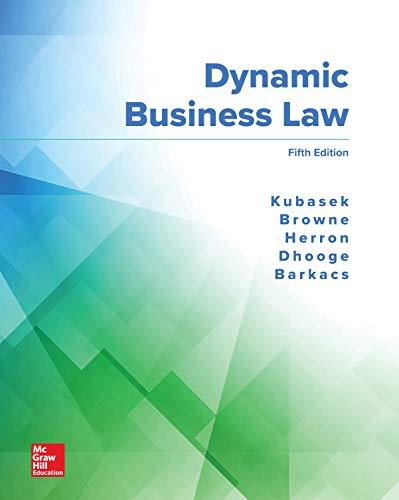In Rutherford (1997), the California Supreme Court addressed the burden on a plaintiff in an asbestosrelated cancer
Question:
In Rutherford (1997), the California Supreme Court addressed the burden on a plaintiff in an asbestosrelated cancer case to prove that the defendant’s product was a legal cause of the plaintiff’s (or the plaintiff’s decedent’s) injuries. The Supreme Court held that such a plaintiff “may prove causation . . . by demonstrating that the plaintiff’s exposure to defendant’s asbestos-containing product in reasonable medical probability was a substantial factor in contributing to the aggregate dose of asbestos the plaintiff or decedent inhaled or ingested, and hence to the risk of developing asbestos-related cancer.”
To meet this burden, many plaintiffs in asbestos cases (including the plaintiff in Rutherford) present testimony from medical experts who espouse the theory that exposure to even low doses of asbestos contributes to the development of mesothelioma, an asbestos-related cancer. . . . [Plaintiff’s expert opined “that each exposure, even a relatively small one, contributed to the occupational ‘dose’ and hence to the risk of cancer,” and therefore the plaintiff’s exposure to Defendant’s product, even if very small, was a substantial factor in contributing to the risk of developing cancer].
In this case, the plaintiff, Ms. Davis, presented such expert testimony at trial in support of her claim that her father’s exposure to asbestos in Bendix brake linings that he used when performing brake jobs in the 1960s and 1970s was a substantial factor in contributing to his risk of developing mesothelioma.
In this appeal from the judgment entered on a jury verdict in plaintiff’s favor, defendant Honeywell International Inc. (Honeywell) contends that this opinion testimony—which commonly is referred to as the “every exposure,” “any exposure,” or “any fiber” theory—should have been excluded because it is speculative and devoid of evidentiary and logical support. Having reviewed much of the commentary and scientific literature cited in support of and against the “every exposure” theory, the appellate court concluded the theory is the subject of legitimate scientific debate. Because, in ruling on the admissibility of expert testimony, the trial court “does not resolve scientific controversies” we believe that processing the expert witness is a task for the jury.
What would have had to have been true for the court to have decided in Honeywell’s favor?
Step by Step Answer:

Dynamic Business Law
ISBN: 9781260247893
5th Edition
Authors: Nancy Kubasek, M. Neil Browne, Daniel Herron, Lucien Dhooge, Linda Barkacs





